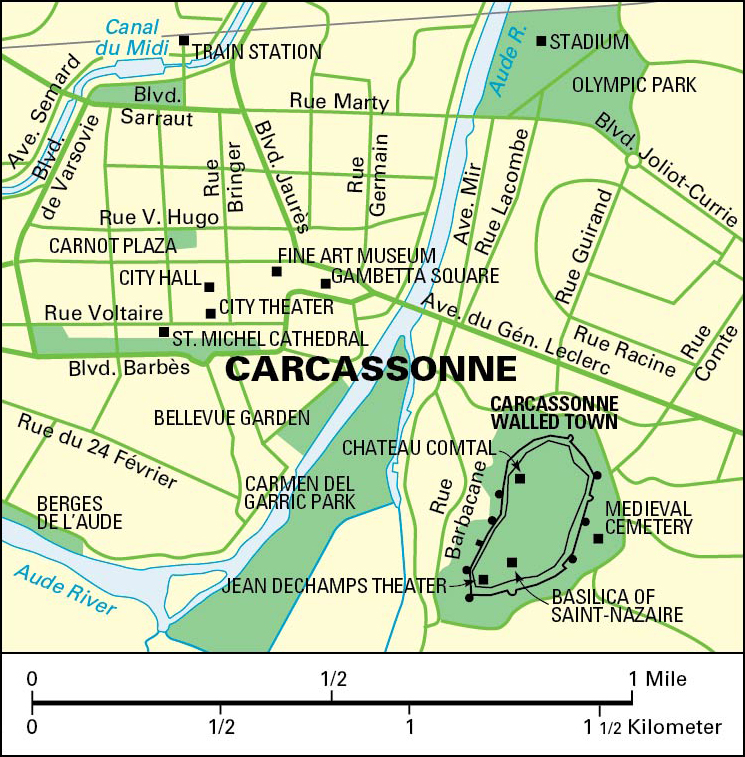Carcassonne, << kahr kah SAWN >> (pop. 45,895), is a city in southern France that includes one of the finest examples in Europe of a medieval walled town. The walled town lies southeast of the rest of the city. Two walls, both including towers, surround the southeastern section. Landmarks within the walls include the Basilica of Saint-Nazaire, which dates from the 1000’s, and the Chateau Comtal, a castle built in the 1100’s. Many tourists visit Carcassonne to see its medieval structures. Carcassonne serves as the capital of the Aude department (administrative district). It is a center of the wine trade of its region. Other economic activities include oil refining and the manufacture of furniture, plastics, and rubber products.

Roman soldiers built a walled town at what is now Carcassonne in the last 100 years before Christ. To keep out invaders, the people of Carcassonne rebuilt the walls and towers in the A.D. 600’s and enlarged them in the 1100’s and 1200’s. The area outside the walls began to develop in the 1200’s. It became the city’s main commercial and residential district. In the late 1800’s, most of the walls and towers were repaired or rebuilt for historical preservation purposes.
See also Languedoc .
